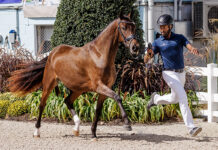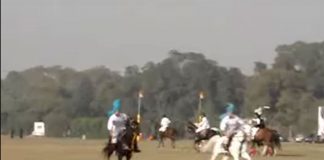Trainer and judge Julie Winkel believes that a more perfect position makes a more effective rider. In line with that philosophy, she explains the four different seats she teaches her riders in order to be effective.
“By understanding the purpose of each seat, the rider becomes more knowledgeable of form following function,” Julie explains. “The half-seat is our jumping position, which allows the horse maximum freedom but gives the rider minimum control. The light-seat affords the rider a little bit more control to help balance the horse in the turns or for a change of lead. A full-seat is used with the rider needs even more control, such as an equitation rollback turn or for more collected work on the flat. The strong-seat is required in some instances with a spooky horse or on the approach to a difficult jump.
“An effective rider,” Julie emphasizes, “is proficient in all four seats, and they should be mastered on the flat before attempting them over a course of jumps.”
Back to Positioned for Success.







How do you achieve these seats?
Thanks
How can you learn to get used to bigger jumps and to have better form?